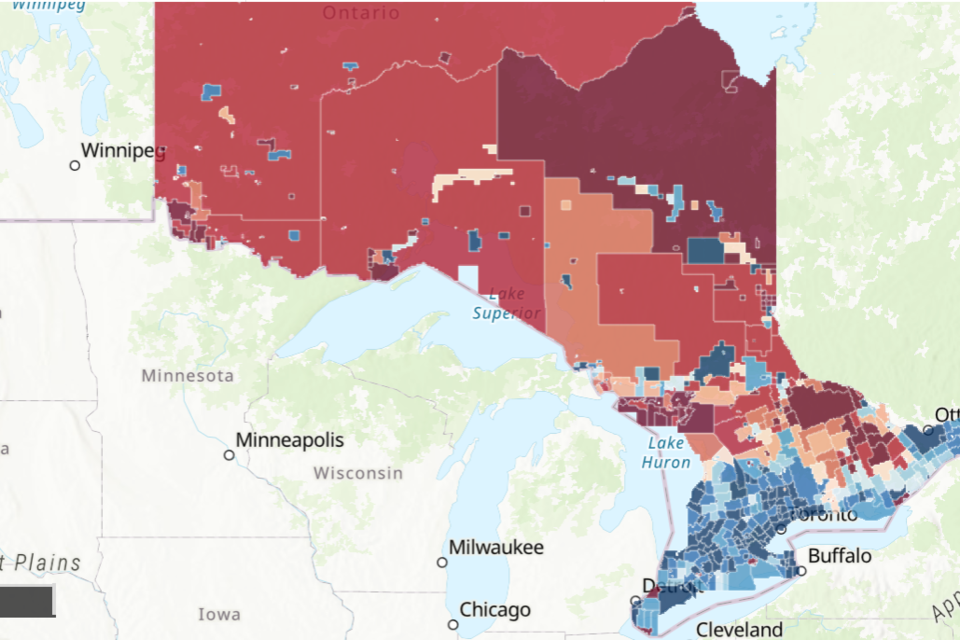NORTHERN ONTARIO — Blue Sky Net has released the newest Northern Ontario Broadband Report. The report uses combined data from ISED’s National Broadband data portal, Census Canada community data, and broadband project data from Ontario Connects to perform an analysis of broadband availability in Northern Ontario.
See: The full Northern Ontario Broadband Report
The federal and provincial governments understand the importance of high-quality internet access, the report states. Both have set a target for 50/10 Mbps internet access — the federal government aiming for every household by 2030 and Ontario for every household by 2025. According to the feds — as of September 2023 — 93.5 per cent of Canadian households have access to 50/10 Mbps and Ontario households have 92.9 per cent access.
Where does Northern Ontario fit into this picture?
Ontario household coverage of 50/10 is at 92.9 per cent, however, Northern Ontario household coverage is 73 per cent and that number is even smaller (52 per cent) when one isolates the five largest communities.
In the Nipissing District, there are 15 communities. Four of those communities have 50–74 per cent of their households with access to 50/10. Just three communities in Nipissing have access to 50/10 in 75 per cent or more of their respective households.
According to Blue Sky Net's report, "The majority of regions throughout Northern Ontario still do not benefit from 50/10Mbps access and this issue is further exacerbated when viewing communities further away from urban centres. One of the major contributing factors in this digital divide between rural and urban centres is the cost of developing fixed networks in areas where the return on investment for Internet Service Providers is diminished due to the longer distances between households and communities, lower population density and the cost of overcoming geographic challenges."
Optimism for the Future
The federal and provincial governments have announced financial contributions of over $2.8 billion for Ontario broadband projects and $1 billion of the Ontario broadband funding has been allocated to Northern Ontario.
The Ontario government has committed over $4 billion in funding for Ontario broadband projects.
Projects are tracked and reported in three stages: Planning, Under Construction, and Complete. The goal for Ontario is to have all funded projects completed and all households covered with 50/10 Mbps by 2025. Progress on funded projects in Northern Ontario have been slower to complete than those in the rest of Ontario. Northern Ontario project completion rate is currently 8.9 per cent, whereas the completion rate in the rest of Ontario is 42 per cent.
"It is encouraging to see investments being made by governments to help subsidize the cost of developing broadband networks in areas where Internet Service Providers require financial support to access communities and households," Blue Sky Net reports.



.png;w=120;h=80;mode=crop)